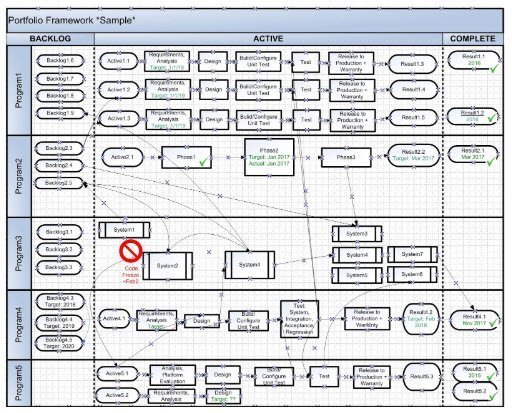When you are focused on results and work in a fluid project environment where expected results change frequently, it is very important to identify and manage all coordination points. Does your project portfolio plan reflect the realities of your organization at the enterprise level? Are interdependencies between projects and other organizational milestones evident? A project portfolio management roadmap ensures you are off to a solid start.
Agile organizations that have a flatter chain of command typically require increasing levels of motivation and responsibility. It is essential for project portfolio managers to adopt an enterprise view and interest.
A key to my success as a project portfolio manager is to take the time to collaboratively develop a project portfolio roadmap as the first step in the planning process. The roadmap helps me see the enterprise environment in which the project portfolio lives. The result is a much more accurate and complete schedule, and therefore, a more accurate budget and maximized resource allocations.
Once in place, I use the same roadmap as an effective communication visual supporting progress and status updates. A roadmap is not a timeline; target and actual dates are reflected in the roadmap, but roadmap components are not visually represented in a linear fashion.
Here are the three steps involved in creating a project portfolio roadmap
Step 1: Identify the interdependencies between projects in the portfolio.
If circumstances permit, consider a manual, in-person approach for this step.
I invite my program and project managers into a room with a whiteboard or wall and lots of post-it notes and markers.
Each program gets a lane on the board; each project in the program is elaborated within its program lane.
The post-it notes are labeled with each major phase of the project and the project’s result then placed on the whiteboard and sequenced in order.
Interdependencies are indicated by lines between post-it notes (and occasionally, between programs).
Reflect the general status in the roadmap by segmenting it into pending, active, and complete sections. Everyone should agree on the placement of projects in those three categories.
Step 2: Identify the interdependencies between the portfolio and the enterprise.
Super-charge the already powerful roadmap by including external milestones. Does your organization have an annual meeting when most of the staff allocated to the project portfolio are unavailable? Is there a need to comply with a new regulation or other mandatory requirements with a fixed deadline? How does the fiscal year-end affect your organization?
Step 3: Digitize the roadmap.
If you implemented the manual, in-person approach to project portfolio roadmap development, capture the roadmap electronically. This frees the project portfolio manager to focus on higher-value activities. This can be something as simple as Microsoft Visio, or in your favorite enterprise project management tool.
The resulting roadmap after Steps 1 and 3 are complete may look something like this:

Project Portfolio Roadmap Template
You will know your roadmap is valuable when stakeholders leave their seat to get a closer look.
Not only is this approach one of the best ways to proactively identify and mitigate scheduled risks, everyone leaves the room with a clear understanding of how their project and program must come together to effectively deliver the project portfolio’s strategy. I have found developing a roadmap to be a very unifying experience.
What’s your favorite technique for gaining an enterprise perspective of your project portfolio?
Similar Content:
-
Part 2: Empowering your project portfolio: How to empower effectively
-
12 Habits of an effective project portfolio manager
-
10 Characteristics of a rock-star project portfolio leader

